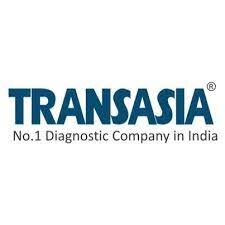UNLOCKING THE POWER OF RETICULOCYTE PARAMETERS IN ADVANCED HAEMATOLOGY ANALYZERS
BHUPENDRA CHAUDHARY PRESIDENT – SALES & MARKETING TRANSASIA BIO-MEDICALS LTD. In the realm of modern medicine, haematology analyzers play a pivotal role in diagnosing and monitoring various blood disorders. Among the multitude of parameters these analyzers measure, the

BHUPENDRA CHAUDHARY
PRESIDENT – SALES & MARKETING
TRANSASIA BIO-MEDICALS LTD.
In the realm of modern medicine, haematology analyzers play a pivotal role in diagnosing and monitoring various blood disorders. Among the multitude of parameters these analyzers measure, the reticulocyte parameter stands out as a crucial indicator of bone
marrow function and erythropoiesis.
Reticulocytes or immature red blood cells provide valuable insights into the body’s response to anaemia, haemorrhage, or other haematological abnormalities. With the advancement of technology, modern haematology analyzers now offer comprehensive reticulocyte parameters, revolutionizing the way clinicians assess and manage blood disorders.
Understanding Reticulocyte Parameters
Reticulocytes are the precursors of mature red blood cells (RBCs), and their production reflects the bone marrow’s ability to respond to erythropoietic stimuli. Traditionally, reticulocyte counts were determined through labour-intensive manual methods like supravital staining. However, the advent of automated haematology analyzers has transformed this process, offering accurate and efficient measurement of reticulocyte parameters. These parameters include reticulocyte count, percentage of reticulocytes, various reticulocyte maturity indices such as low/med/high fluorescence ratio (LFR, MFR, HFR) in iron deficiency, mean corpuscular haemoglobin content of reticulocytes (CHr) and Reticulocyte Hemoglobin Content that offers a real-time snapshot of bone marrow iron status, providing valuable information about the balance between iron and erythropoiesis.
Clinical Significance
One of the key advantages of incorporating reticulocyte parameters in haematology analyzers is their ability to provide rapid and reliable information about erythropoietic activity. By assessing reticulocyte production, clinicians can differentiate between various types of anaemia, classify them based on their underlying mechanisms, and tailor appropriate treatment strategies accordingly. For instance, a low reticulocyte count in the setting of anaemia suggests impaired erythropoiesis, while a high reticulocyte count may indicate increased RBC turnover in response to haemolysis or haemorrhage.
Prognostic Value
Monitoring reticulocyte parameters is indispensable in assessing the efficacy of interventions such as iron therapy, erythropoietin administration, or blood transfusions. Changes in reticulocyte count and indices reflect the bone marrow’s response to these interventions, allowing clinicians to adjust treatment regimens and optimize patient outcomes. Additionally, in conditions like chronic kidney disease or chemotherapyinduced anaemia, serial monitoring of reticulocyte parameters aids in evaluating the response to therapy and guiding clinical management decisions.
Furthermore, reticulocyte parameters offer valuable prognostic information in various haematological malignancies and bone marrow disorders. In conditions like aplastic anaemia or myelodysplastic syndromes, alterations in reticulocyte indices may precede overt changes in peripheral blood counts, serving as early indicators of disease progression or response to therapy. By closely monitoring reticulocyte parameters, clinicians can anticipate complications, initiate timely interventions, and improve patient prognosis.
Integration and Benefits
The integration of reticulocyte parameters in advanced haematology analyzers has not only enhanced diagnostic accuracy but also streamlined workflow in clinical laboratories. Automated analysis reduces turnaround time, minimizes the risk of human error, and enables high-throughput testing, thereby increasing efficiency and productivity. Moreover, the availability of comprehensive reticulocyte parameters empowers clinicians with actionable insights, facilitating informed decision-making and personalized patient care.
Conclusion
The inclusion of reticulocyte parameters in advanced haematology analyzers represents a significant milestone in the field of laboratory medicine. These parameters offer invaluable information about erythropoietic activity, aid in the diagnosis and management of various blood disorders, and serve as prognostic markers in haematological malignancies. By harnessing the power of reticulocyte parameters, clinicians can enhance diagnostic accuracy, optimize treatment strategies, and ultimately improve patient outcomes in the realm of haematology





